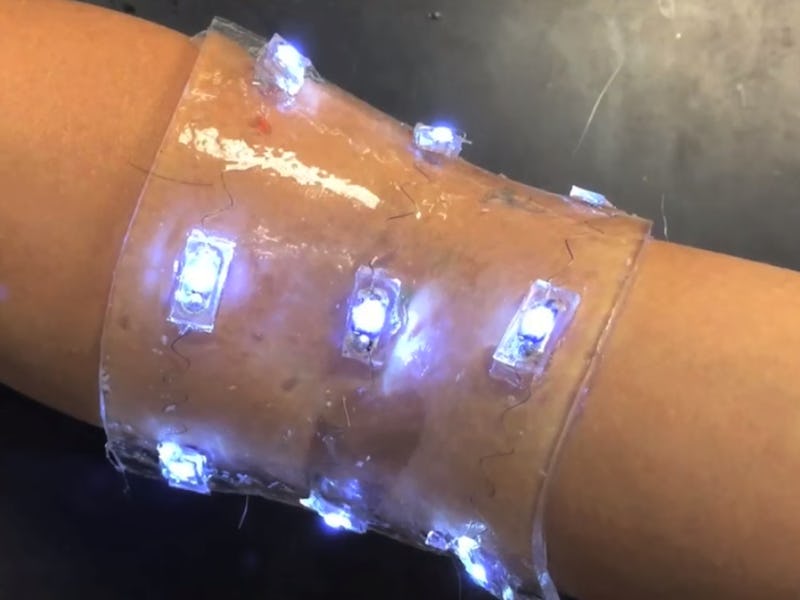MIT Researchers Develop Wound Dressings That Act Like Human Tissue
MIT-developed Hydrogel will act like tissue to bridge divide between electronics and human body.

The idea that medical devices might one day cling to our flesh might seem a little creepy — until you see how researchers at MIT are developing a “hydrogel” that could make this prospect a reality, bridging the divide between the human body and electronics.
So-called hydrogels, “polymer networks infiltrated with water,” as MIT mechanical engineering professor Xuanhe Zhao describes them, could serve as this kind of conduit, applying medicine to disease-stricken areas through a wound-dressing composed solely of hydrogel and heat-sensors.
The whole concept is described in a video uploaded to Youtube by MIT today:
Researchers have long described the similarities between human tissue and hydrogel, citing the material’s stretchiness, durability, and ability to adhere to a myriad of surfaces, such as titanium, glass, and silicon.
Some Hydrogel is even made of 90 percent water, and puts the hyper-evasiveness of superglue to shame through its elasticity and toughness.
Scientists like Zhao, who have put the material toward medical practice in the past, now hope to potentially treat disease and injuries through a “smart hydrogel wound dressing that integrates different sensors and drug delivery channels.”
According to Zhao, the process would look something like this:
And this:
“When the sensor senses an abnormal temperature in a certain region of the body, the drug delivery channel can automatically deliver a specific type of drug to that location,” Zhao says.
There’s more than just heat sensors involved, however. Zhao’s team notes that conductive wires, semiconductor chips, and LED lights are also employed in this newfangled wound dressing.
The net-effect is something of a human circuit board that mimics “the physiological and mechanical properties of the human body,” according to Zhao.
Zhao, who helps lead MIT’s Soft Active Materials Laboratory, sees the application of hydrogels in the medical field as an exciting and practical opportunity that hasn’t really been mastered yet.
“We’d like to explore various types of hydrogel-based implantable devices,” he says.